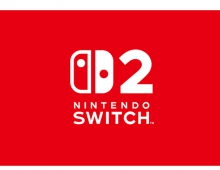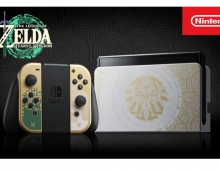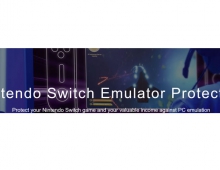
Nintendo launches DS handheld
It's the fight computer gamers have been waiting for. But the latest duel between wise old master Nintendo and challenger Sony is not taking place on a TV screen.
This real-life fight began on Sunday and pits Nintendo against Sony Computer Entertainment Inc (SCEI). Their weapons of choice: for Nintendo it's the DS (Dual Screen) and for Sony, the PSP (PlayStation Portable).
Nintendo has effectively owned the portable gaming space with its Game Boy for the last several years but that position is now under threat. Sony is attempting to do with the PSP what it did in the console gaming space with the PlayStation: enter as a newcomer and ascend to the top position.
The console fight played out in the latter half of the 1990s -- a time when Nintendo and Sega dominated the console gaming market with positions that seemed unassailable. Like a fast-action move in one of its video games, Sony went for the jugular of both companies and in the end only Nintendo was left standing. Sega was ousted from the hardware side of the market in 2001 and earlier this year announced it was merging with Sammy, a Japanese Pachinko pinball machine maker.
There's a lot riding on the success of the DS. Consumers got their first chance to pass judgement on the system on Sunday, when it made its world debut in the US.
Opening the box, users discovered a clamshell device that unfolds to reveal a pair of 3-inch LCD (liquid crystal display) screens, one of which is touch-sensitive. Together with a microphone that's embedded into the device, Nintendo is hoping the two will add new angles to game-play by allowing feedback by touch and voice in addition to using the control pads.
Nintendo has already demonstrated a game called Nintendogs that features a digital dog and involves the player calling out instructions such as to roll over or sit. If the dog obeys, the player can reward it be stroking its head or rubbing its belly using the touch-sensitive screen.
Look a little deeper into the system and you'll also find support for wireless LAN. This can enable the creation of ad hoc networks reaching up to 30 meters from the device. Depending on software support, two or more users with the same game can play against each other via the wireless link. An innovative feature is game sharing which allows two users to share a single game cartridge and play against each other. This is only available on certain titles.
The network also supports a chat function. An application called PictoChat, built into each DS, allows up to 16 users within wireless range to create an ad hoc network and participate in a group discussion. A stylus and on-screen keyboard are used to type messages into the system.
But what of the challenger?
Sony has promised to launch the PSP in the US before the end of March, but in Japan it will go on sale on December 12, less than two weeks after Nintendo launches the DS there. Sony has already been showing it to prospective users.
The PSP is easy to hold, with control pads located either side of its bright, wide-screen 4.3-inch display. Sony is promising users all of the performance of the PlayStation 2 console but in a handheld form. Users at the Tokyo Game Show were impressed.
Like Nintendo, Sony has also built in a wireless LAN function that can be used for wireless games.
Games in the PSP will be packaged on a new format called UMD (Universal Media Disc). UMDs are 60 millimeter diameter optical discs encased in cartridges, and can hold up to 1.8GB of data.
The PSP will support versions of UMD discs for games, audio content and video content. UMDs featuring mixed game, audio and video content are expected on the market during the second quarter of 2005, SCEI said.
Already, one of the hottest discussion points among potential users is the PSP's battery life. Staff on the company's booth at the Tokyo Game Show who were demonstrating the device said they were getting a battery life of around 2 hours -- much shorter than the 6 to 10 hours for the Nintendo DS. Sony later said that it had measured the battery life at 4 to 5 hours so all eyes are now on the real-world performance reported by its first users on December 12.
Nintendo's DS costs $150 in the US. Sony has yet to announce US pricing for the PSP, but it will cost the equivalent of about $190 in Japan. That's quite a bit lower than analysts had originally predicted, and will no doubt be welcomed by users who usually have to pay a premium for early versions of new products.
From DIGIT





















